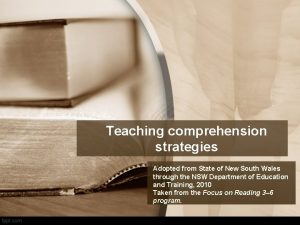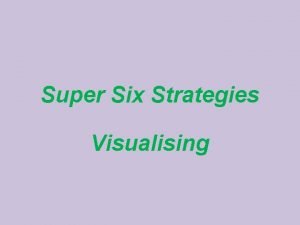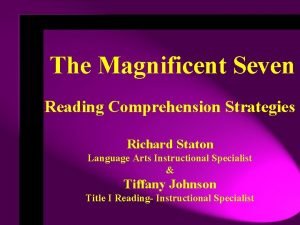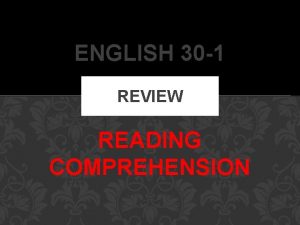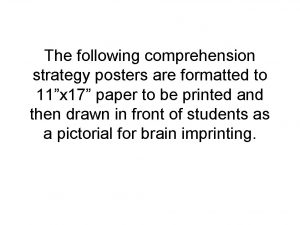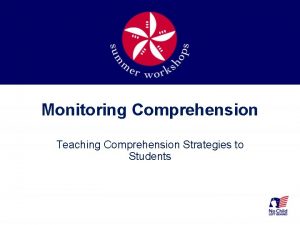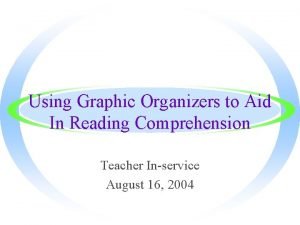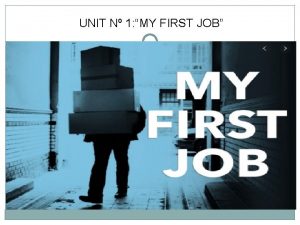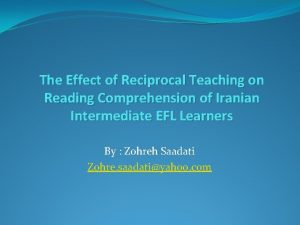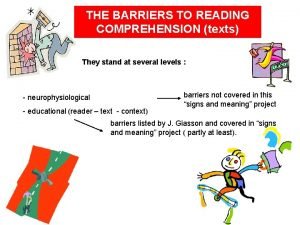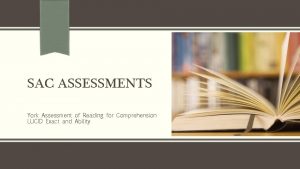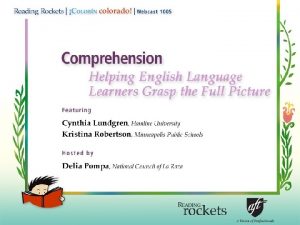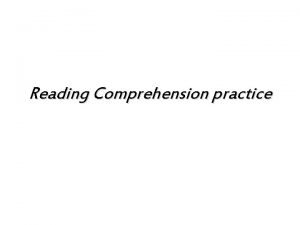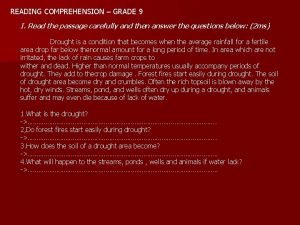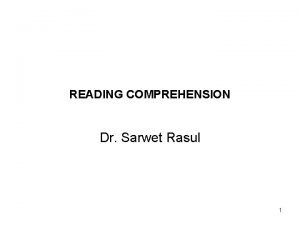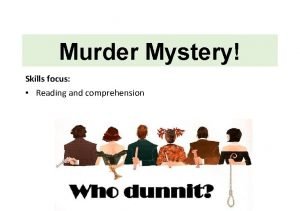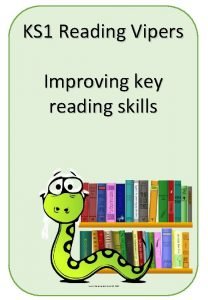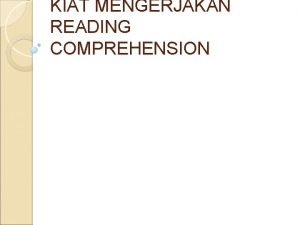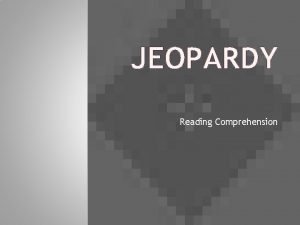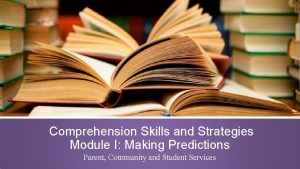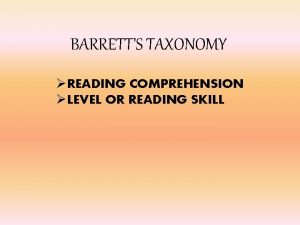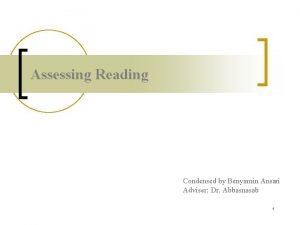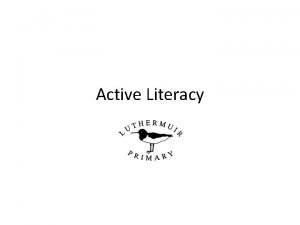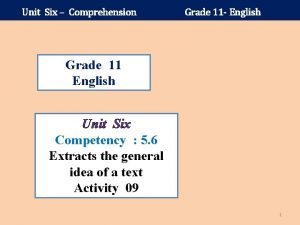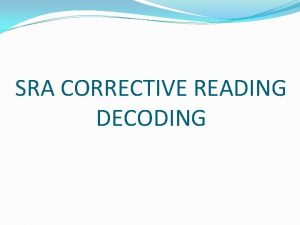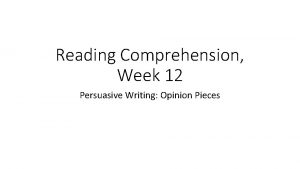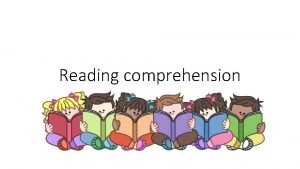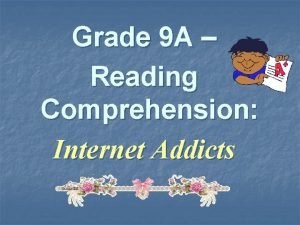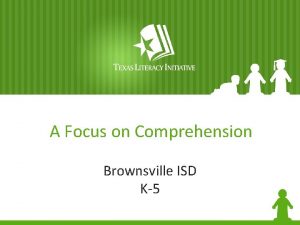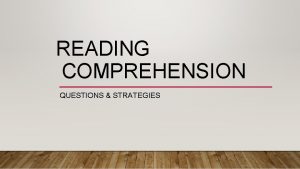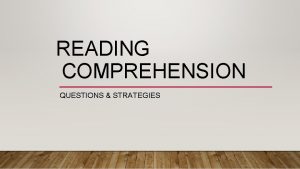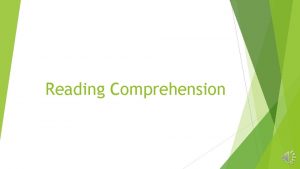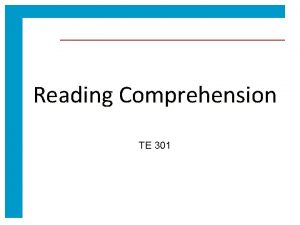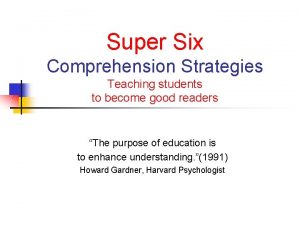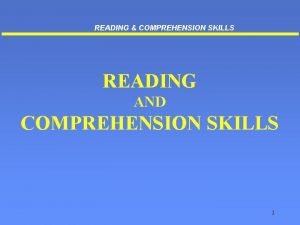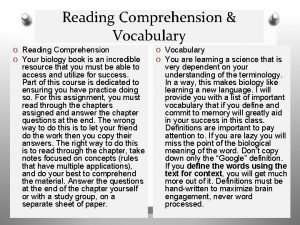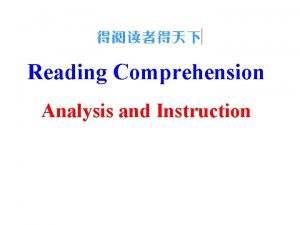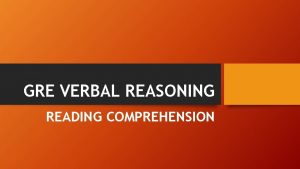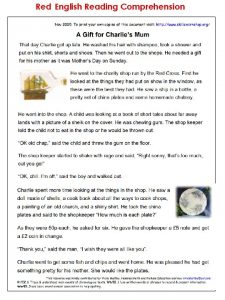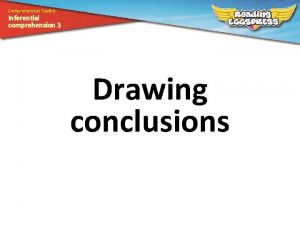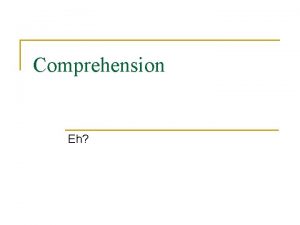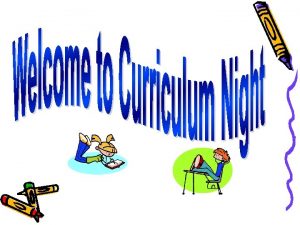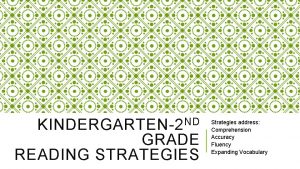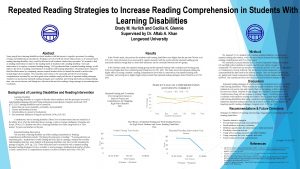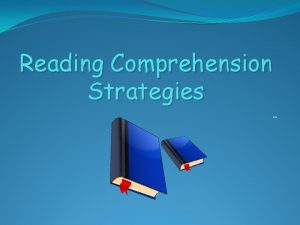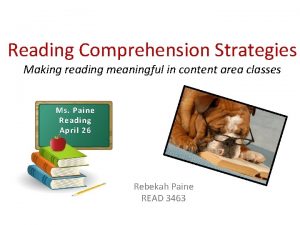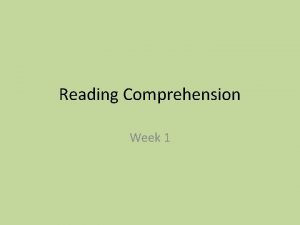Part 1 Super Six Reading Comprehension Strategies Part







































- Slides: 39


英語課堂中的閱讀教學與策略運用 Part 1. Super Six Reading Comprehension Strategies Part 2. Super Six Reading Class Example 2

Super Six Reading Comprehension Strategies Making connections Predicting Questioning 3

Super Six Reading Comprehension Strategies Monitoring Visualizing Summarizing 4

1. Making connections text Me 5

1. Making connections e. g. This makes me think about… 6

2. Predicting 1. Use graphics, text and experiences to anticipate what will happen next. 2. Adjust comprehension while reading. e. g. 7

2. Predicting e. g. Speech bubbles 8

2. Predicting 9

3. Questioning • Questions can be generated by the teacher or the learner. • Learners ask or answer questions to clarify meaning and promote deeper understanding. e. g. 10

4. Monitoring (1) Stop and think about the text. I understand I don’t understand. I fixed it up. (2) Fix-up strategies: re-read, keep reading, picture and text clues 11

4. Monitoring (2) e. g. 12

5. Visualizing • Learners create a mental image from a text read/heard. • The image changes as learners read, like a movie playing in learners’ brain. 13

5. Visualizing 14

6. Summarizing • Learners use their own words to retell the main idea. • E. g. 15

6. Summarizing Making Connections Predicting Questioning Making Connections Questioning 16

6. Summarizing Monitoring Visualizing Summarizing Monitoring 17

Super Six Reading Class Example • G 3/G 4 students • Goals: Students are able to (1) comprehend the reading by using the super-six strategies. (2) point out the main idea and details of the reading. • Materials: Hess ebook Go to the Dentist 18

1. Preparation- Making Connections • Ask students their experiences of going to a dentist. 19

2. Presentation-Predicting (1) Class Predicting • Show story pics 1~3 and stimulate logical predictions. 20

2. Presentation-Predicting • What do you see? How do they feel? Why? 21

2. Presentation-Predicting • Where is Max going? 22

2. Presentation-Predicting (2) Pair predicting(I) • Pair discussion (in English or Chinese) Beginning Middle End ˇ ﹖ ﹖ Middle: Max is _______ because_____. End: Max is _______ because______. • Prediction sharing (English) 23

2. Presentation-Predicting (3) Pair predicting (II): picture sequencing • Give out worksheets. 24

2. Presentation-Predicting (3) Pair predicting (II): picture sequencing • Discuss in pairs. • Share predictions. • Watch E-book and adjust predictions. 25

2. Presentation-Predicting Scaffolded / more controlled instruction. (1) (2 ) Beginning Middle End ˇ ﹖ ﹖ 26

3. Practice-Monitoring • Self-read and mark (ˇ/? ). • Pair Ss (明星 & 教練) and explain scoring systems. • Pair-read and solve problems. • Reading relay. Students’ limitless potential. 27

3. Practice-QAR Questioning Question-Answer Relationship In the Book In My Head Right There Author and You The answer is easily found in the text. The exact words for the questions and answers are located in the same sentence. The answer is not in the text. The reader combines previous knowledge with text information to create a response. Think and Search On My Own The answer is in the text, but requires gathering information from different places in the selection. The answer is not in the text. The reader uses previous experience to respond. 28

Questioning Are you afraid of going to see the dentist? What time is Max’s appointment? What is Max’s feeling from the beginning to the end? QAR Right there Think and Search Author and me On my own If you were Max, would you think the doctor is a monster? 29

3. Practice Class: (3) Summarizing • Pair work discussion. No: – Book title – Character – Setting – Plot: beginning, middle & end. 30

clinic scared Max happy dentist nervous nurse Go to the Dentist Max, nurse, dentist Clinic scared nervous happy terrific 31

3. Practice (4) Follow-up activities – Story worksheet – Read and circle the correct words (pair work) (5) HW: write down and draw your favorite sentence. 32

Go To the Dentist Nurse: Hello, I am Jan. What’s your name? Max: My name is Max. Nurse: Sit down, Max. Girl: Look! Boy: Listen! Nurse: Go on, Max! Dentist: Sit down, Max. How are you? Max: N…N… Not bad, th… thank you. Dentist: How old are you? Max: I… I… I am ten. Dentist: O. K. , be quiet, Max. Let’s start. One, two, three, four, five, six, seven, eight, nine, ten. You are fine, Max. Stand up. Max: Thank you. Dentist: Goodbye, Max. Boy and Girl: How are you? Max: I’m terrific! 33

3. Practice Go to the Dentist Max goes to visit the _____ (dentist, nurse). People are _____ (sitting, dancing) in the waiting _____ (school, room). The _____ (nurse, teacher) says “hello” to him, but Max is very scared. Now, it’s Max’s turn. He climbs onto the _____ (chair, desk). The dentist wears a _____ (hat, mask) over his face. He looks into Max’s mouth. Max opens his ______(eyes, mouth) as wide(張大) as he can. The doctor checks his _____(teeth, tooth) carefully(小心地). Max is very______ (scared, happy). He tries (試著)not to ____ (cry, sleep). He thinks the dentist is a ______ (monkey, monster). “You are fine. ” “Remember(記得) to brush ______(your, my) teeth. ” Max is ____(happy, sad) now. He smiles at everyone! Group work or pair work 1. 輪流依顏色寫出答 案。 #1回答 問題 #2回答 問題 #3回答 問題 #4回答 問題 2. 分組唸 、組內輪 流唸、組內一起唸 3. S 1唸, S 2 finger reading,唸完交 換角色。 34

3. Practice What’s your favorite part of the story? Write down the sentence and draw a picture. 你最喜歡故事的哪一部分? 請寫出句子並 畫出來 _____________________________________________________ 35

3. Practice 36



39
 Super six comprehension strategies
Super six comprehension strategies Teaching comprehension strategies nsw
Teaching comprehension strategies nsw Super six strategies
Super six strategies Seven reading strategies
Seven reading strategies Visualize reading strategy
Visualize reading strategy English 30-1 reading comprehension
English 30-1 reading comprehension Superworm wizard lizard
Superworm wizard lizard Pre reading while reading and post reading activities
Pre reading while reading and post reading activities Comprehension strategies posters
Comprehension strategies posters What is comprehension monitoring
What is comprehension monitoring Reading comprehension about inventions
Reading comprehension about inventions Story maps for reading comprehension
Story maps for reading comprehension My first job reading comprehension
My first job reading comprehension Jobs and professions reading comprehension
Jobs and professions reading comprehension Explain reading comprehension
Explain reading comprehension Text barriers
Text barriers York reading assessment
York reading assessment What is reading comprehension
What is reading comprehension Superteachers.com
Superteachers.com I were you i would
I were you i would Reading text for grade 9
Reading text for grade 9 Comprehension entails three elements
Comprehension entails three elements What is the answer
What is the answer Focus
Focus Reading vipers examples
Reading vipers examples The paragraph preceding the passage most probably discusses
The paragraph preceding the passage most probably discusses Main idea and details jeopardy
Main idea and details jeopardy Reading comprehension making predictions
Reading comprehension making predictions Headsprout reading comprehension
Headsprout reading comprehension Barrett taxonomy reading comprehension
Barrett taxonomy reading comprehension What is perceptive reading
What is perceptive reading Reading skills pyramid
Reading skills pyramid Comprehension for grade 11
Comprehension for grade 11 Sra decoding placement test
Sra decoding placement test Persuasive comprehension
Persuasive comprehension Reading comprehension birthday party
Reading comprehension birthday party Benefits of scanning in reading
Benefits of scanning in reading Reading comprehension scraping the sky answer key
Reading comprehension scraping the sky answer key Are you an internet addict reading comprehension
Are you an internet addict reading comprehension K5 reading comprehension
K5 reading comprehension

